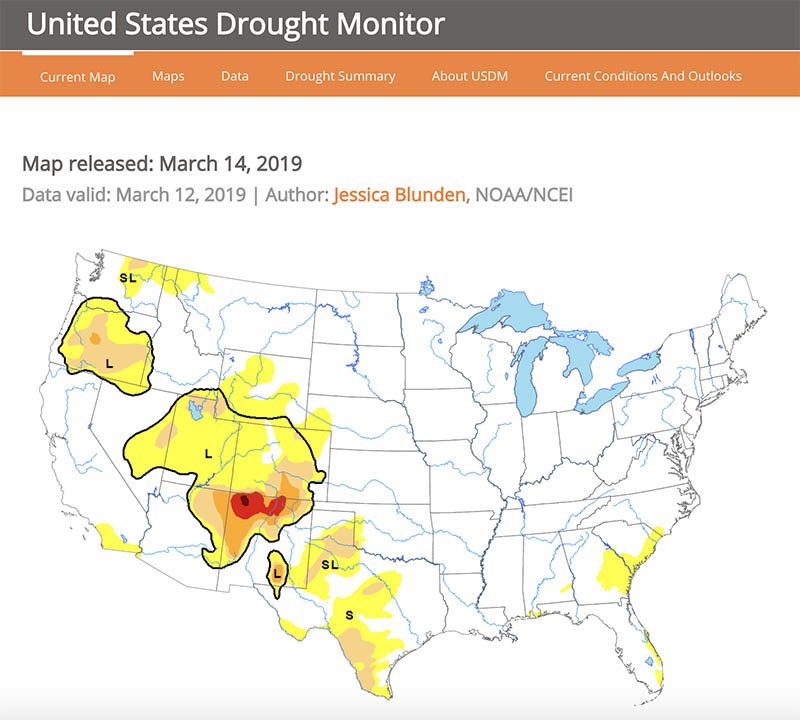If Hollywood made a movie about golf courses in California and their access to water, it might be titled "The Way We Were."
Starring Barbra Streisand and Robert Redford, the movie by that name made its Hollywood debut in 1973, which happens to feel like the last time golf course operators in California were not concerned about issues related to water use. Although much of California has been lifted out of drought status since 2016, the way golf courses are managed in the country's largest state will never go back to those pre-drought days.
 Even in times of plenty, the rising cost of water eventually will become more than some golf facilities can bear, and efforts are underway in Southern California to protect two main water sources in the region - groundwater aquifers and the Colorado River Basin that provides water to more than 40 million people in parts of seven states.
Even in times of plenty, the rising cost of water eventually will become more than some golf facilities can bear, and efforts are underway in Southern California to protect two main water sources in the region - groundwater aquifers and the Colorado River Basin that provides water to more than 40 million people in parts of seven states.
To that end, California was the latest state this week to sign onto a multi-state drought-management plan to monitor levels in the overly burdened Colorado River Basin that includes Lake Mead on the Arizona-Nevada border. The plan gives the U.S. Bureau of Reclamation authority to shut off access to the river that is the primary water source for California's Coachella and Imperial valleys.
No one in the California golf industry follows these water issues more closely than Craig Kessler, government affairs director for the Southern California Golf Association and chairman of the Coachella Valley Golf and Water Task Force for the California Alliance for Golf.
He believes it is better for golf courses in the valley to start getting used to the concept of even less water in the future, and they should start sooner rather than later. If the level of Lake Mead continues to drop, it could trigger a series of cutbacks initiated by the U.S. Bureau of Reclamation, a branch of the U.S. Department of the Interior. The first cutbacks would go into place if the lake drops below 1,075 feet above sea level, which is expected as early as next year. Additional cutbacks occur if the lake level continues to fall. The lake's current level is 1,089 feet above sea level, and surface elevation at full capacity is 1,221 feet, which hasn't occurred since 1983.
If Lake Mead drops below a certain level, and it's close to it, the government steps in, declares an emergency and cuts the whole thing off.
"If Lake Mead drops below a certain level, and it's close to it, the government steps in, declares an emergency and cuts the whole thing off," Kessler said. "It's inevitable sometime in the 2020s that the very rich allocations that the Imperial and Coachella valleys get off the Colorado River now will change. They're still the primary users, but things are wrapping up now, so that will be cut back. So suddenly, the cheap and plentiful water that is in the desert today won't always be there. But when water is cheap and plentiful and there is no threat of drought statewide, it is very difficult to get the attention of golf communities in the desert where people come from Manitoba and Sweden and wherever in the world to see wall to wall green.
"The pressure is off, or people think it is, but it isn't. We are huddling to try between now and then to convince people that it is the better to ramp up to this over four, five or six years rather then when an ax falls."
Water in other parts of the state is not so cheap. In fact, constant year-over-year rate hikes will continue to eat away at California's golf business, Kessler said.
 "The Coachella Valley really is a nation apart from the rest of California in many regards, in particular regarding water and golf," Kessler said.
"The Coachella Valley really is a nation apart from the rest of California in many regards, in particular regarding water and golf," Kessler said.
"In other parts of the state, notwithstanding the breaking of the drought, everything related to water is baked in for years to come. There are many places in the state where water is going up 9 percent a year. When you're going up 9 percent on 9 percent on 9 percent, it adds up very fast and you have a doubling effect in very rapid order. That rate structure has imposed incredible discipline."
In the L.A. area, changes are coming in the way the the Los Angeles Department of Water and Power manages groundwater resources. The department eventually will be given new powers of tiered pricing, penalty pricing and allocation to users.
"Those tools soon will become available to the water district, and they will be compelled by California law to use them if necessary to keep the aquifer in balance and the state capital happy that they are doing a prudent job," Kessler said.
The question is how much of the golf industry is going to come out the other side. It has nothing to do with not being able to get water. It has everything to do with not being able to afford water.
Although the U.S. Drought Monitor shows only small areas in extreme Northern and Southern California to be abnormally dry (the site's lowest level of drought awareness) access to water continues to be a matter of serious concern in California. Last November, a stormwater-storage measure in Los Angeles County that taxes real estate at 2.5 cents per 1,000 square feet of building space received nearly 70 percent of the vote. The measure promises to provide hundreds of millions of dollars annually to add infrastructure to capture and store stormwater.
"The cost of everything related to water is going up and up and up," Kessler said. "And it is going up by many multiples of the consumer price index. And for the golf industry it is more than the market's ability to absorb through green fees and club fees.
"It is impossible to be complacent - everything baked into the system moving forward is a hardship related to water and golf. We'll be able to solve the problem, I have no doubt about that. The question is how much of the golf industry is going to come out the other side. It has nothing to do with not being able to get water. It has everything to do with not being able to afford water."

